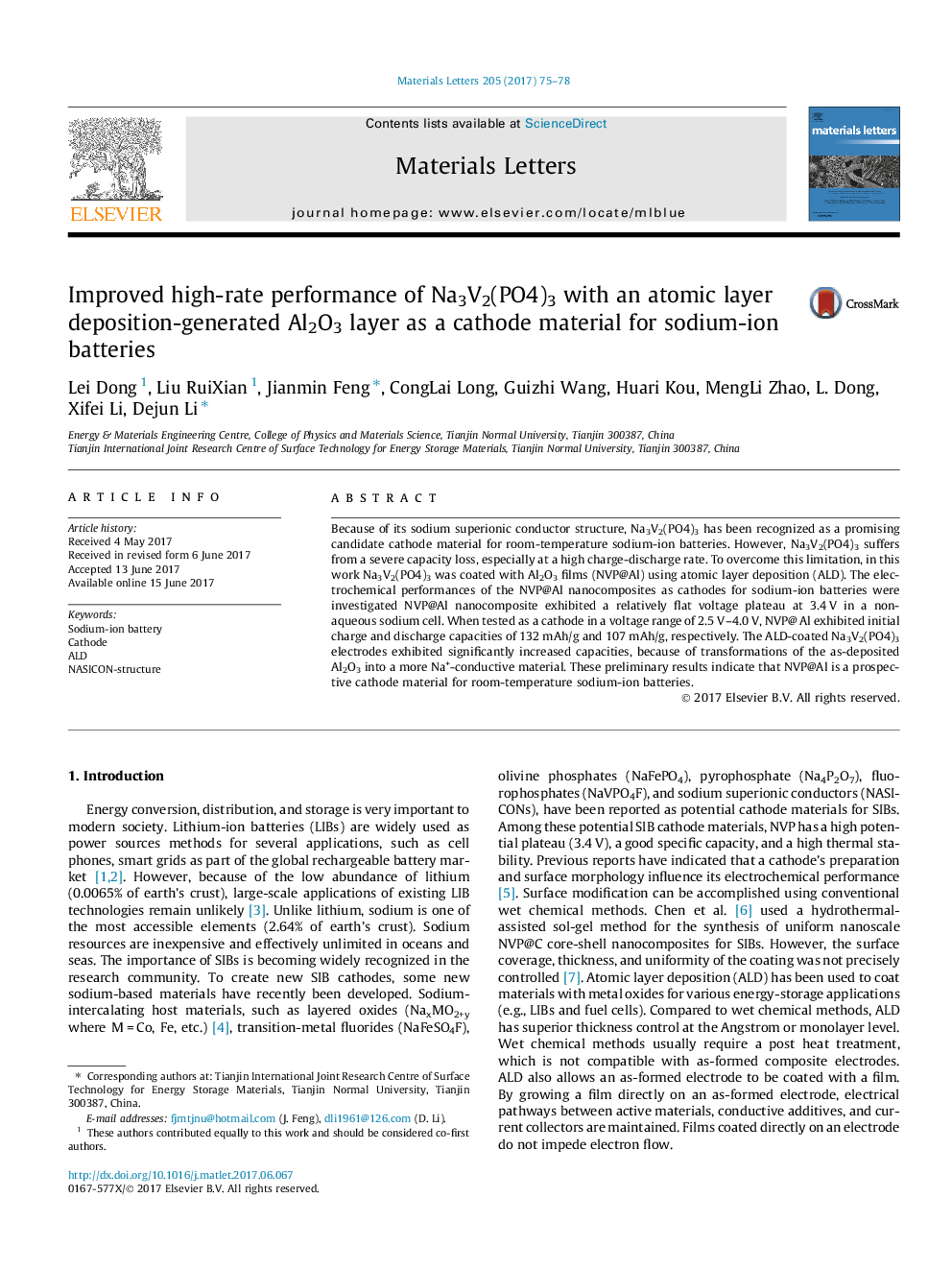| Article ID | Journal | Published Year | Pages | File Type |
|---|---|---|---|---|
| 5462875 | Materials Letters | 2017 | 4 Pages |
Abstract
Because of its sodium superionic conductor structure, Na3V2(PO4)3 has been recognized as a promising candidate cathode material for room-temperature sodium-ion batteries. However, Na3V2(PO4)3 suffers from a severe capacity loss, especially at a high charge-discharge rate. To overcome this limitation, in this work Na3V2(PO4)3 was coated with Al2O3 films (NVP@Al) using atomic layer deposition (ALD). The electrochemical performances of the NVP@Al nanocomposites as cathodes for sodium-ion batteries were investigated NVP@Al nanocomposite exhibited a relatively flat voltage plateau at 3.4Â V in a non-aqueous sodium cell. When tested as a cathode in a voltage range of 2.5Â V-4.0Â V, NVP@ Al exhibited initial charge and discharge capacities of 132Â mAh/g and 107Â mAh/g, respectively. The ALD-coated Na3V2(PO4)3 electrodes exhibited significantly increased capacities, because of transformations of the as-deposited Al2O3 into a more Na+-conductive material. These preliminary results indicate that NVP@Al is a prospective cathode material for room-temperature sodium-ion batteries.
Keywords
Related Topics
Physical Sciences and Engineering
Materials Science
Nanotechnology
Authors
Lei Dong, Liu RuiXian, Jianmin Feng, CongLai Long, Guizhi Wang, Huari Kou, MengLi Zhao, L. Dong, Xifei Li, Dejun Li,
